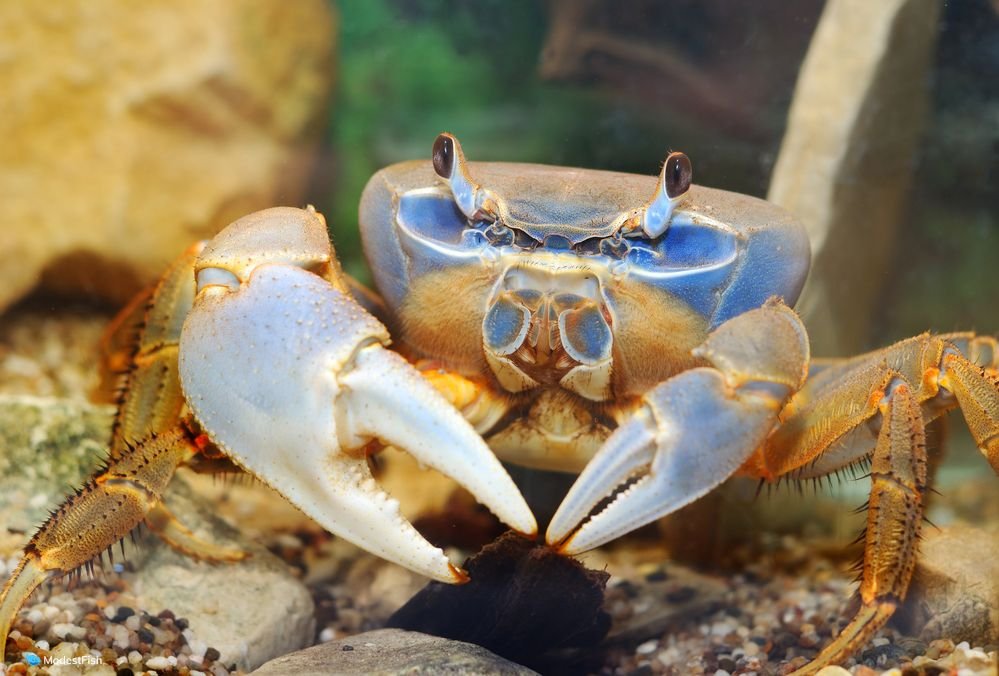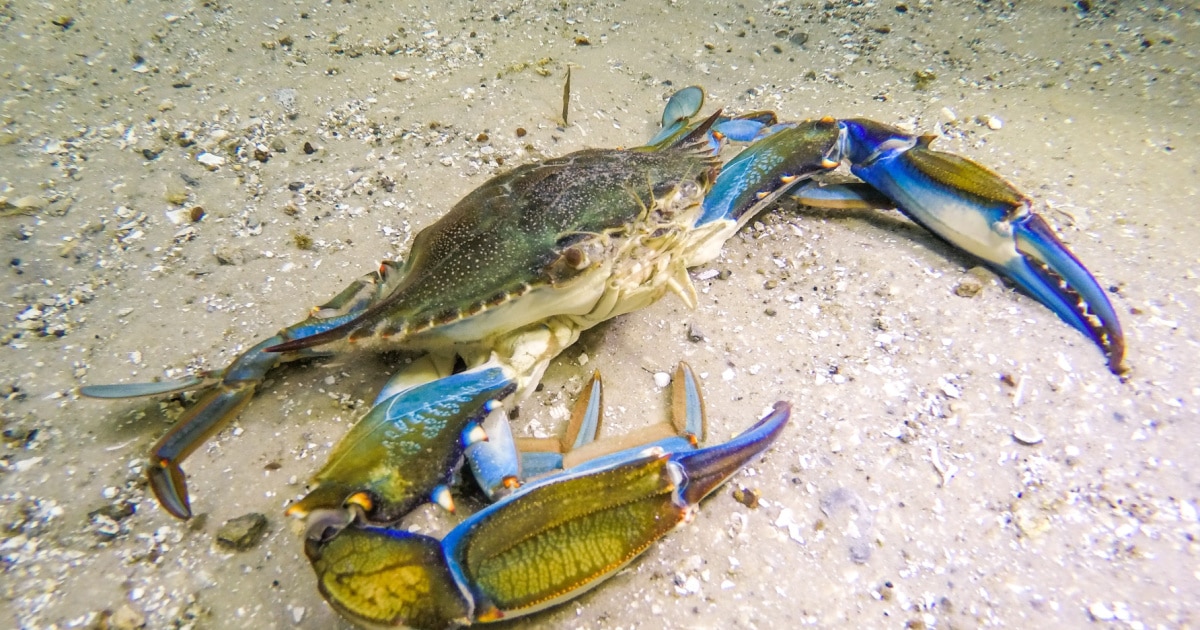As an avid aquarist and crab enthusiast I’m often asked if crabs can survive in freshwater tanks and ponds. This is an interesting question since most crab species thrive in saltwater environments. However, there are actually quite a few freshwater crab varieties perfectly adapted to living in low-salinity habitats.
In this article, I’ll explore the intriguing topic of freshwater crabs in detail. You’ll learn which types of crabs can live in freshwater, their habitat needs, proper care, and more. Let’s dive right in!
An Overview of Freshwater Crabs
While saltwater species like blue crabs and Dungeness crabs get most of the attention, there are around 20-30% of crab species suited to freshwater living. These include
-
Fiddler crabs: Found in brackish mangrove swamps and marshes. They have one oversized claw.
-
Red claw crabs: Named for their bright claws. They prefer planted tanks with driftwood.
-
Thai micro crabs: Tiny crabs under an inch big. Peaceful for community tanks.
-
Vampire crabs: Called vampire crabs for their dark color. They come from tropical forests.
-
Crayfish: While not true crabs, these freshwater crustaceans are popular in aquariums.
So while marine crabs need saltwater, there are quite a few options that naturally thrive in low-salinity freshwater habitats in the wild.
Natural Habitats For Freshwater Crabs
To understand their ideal aquarium conditions, it helps to look at the natural environments of freshwater crabs:
-
Rivers and streams: Some live in fast moving freshwater surrounded by rocks and vegetation.
-
Marshes and swamps: Fiddler and vampire crabs naturally live in brackish wetlands.
-
Tropical forests: Vampire crabs come from jungle areas with leaf litter and high humidity.
-
Mangrove forests: Fiddlers thrive in the intersection of saltwater and freshwater.
-
Lakes and ponds: Some live in planted, debris-filled bodies of still freshwater.
So most freshwater crabs come from warm habitats with plenty of plants, wood, rocks, and other natural materials that mimic their wild homes.
Freshwater Crab Care In Aquariums
Keeping freshwater crabs healthy involves setting up a suitable tank environment and diet:
-
Tank size: 5-10 gallons per crab minimum. Bigger is better.
-
Plants: Add live or silk plants for hiding spots. Floating and surface plants help recreate a marsh.
-
Substrate: Sand or fine gravel along with driftwood, rocks, and leaves.
-
Filtration: A gentle filter and frequent water changes to keep water clean.
-
Land area: Crabs like red claws need both land and aquatic space.
-
Heating: A heater and thermometer to maintain proper temperature (70-80°F).
-
Lighting: A moderate light cycle of 8-12 hours to support plants.
-
Food: Omnivorous diet of fish flakes, veggies, insects, shrimp pellets.
-
Tankmates: Select peaceful species like small tetras, rasboras, snails, and shrimp. Avoid aggressive fish.
Recreating their natural freshwater environment in your aquarium is key to success. Perform regular maintenance and water testing as well to keep parameters stable.
Brackish Water Options
Some freshwater crabs, especially fiddler crabs, prefer brackish water which contains a low level of salt. To create brackish conditions:
-
Mix marine salt into freshwater to reach a gravity of 1.005-1.010.
-
Use a refractometer to carefully monitor and maintain this salinity.
-
Choose salt-tolerant tankmates like mollies, bumblebee gobies, or monos.
-
Perform more frequent water changes as nitrates accumulate faster in brackish water.
Though a bit more work, a brackish setup is ideal for fiddler and other crabs that migrate between fresh and saltwater in the wild.
Molting and Growth
Like other arthropods, crabs must periodically shed their exoskeleton to grow. This process is called molting. To aid molting:
-
Give crabs high-protein foods before and after molting.
-
Provide extra calcium via shells, cuttlebone, or supplements.
-
Maintain warm, stable water conditions and ideal salinity.
-
Leave shed exoskeletons in the tank, as crabs will eat them to regain lost calcium.
-
Keep an eye out for any molting issues which can be dangerous.
Molting is a vulnerable time for crabs. Ensuring proper nutrition and care will help them through this process safely.
Breeding Freshwater Crabs
Many freshwater crabs can be bred in captivity if provided the right conditions:
-
Sex crabs by looking at their underside. Males have a narrow, V-shaped abdomen.
-
Create a dedicated breeding tank with warm, clean water, hiding spots, and plentiful food.
-
After mating, females carry eggs for 3-4 weeks before they hatch into larvae.
-
Larvae go through several planktonic stages, requiring frequent feeding of infusoria or powdered fry food.
-
Once crabs transition to juvenile stage, move them to a rearing tank with fine sand substrate and seeded filter media.
-
Growth is slow, so patience is required. It can take 12-18 months for crabs to reach full size and maturity.
With close attention to water quality, nutrition, and proper staging of life cycles, you can successfully hatch and raise juvenile crabs to adulthood.
Good Tankmates For Freshwater Crabs
Here are some suitable freshwater tankmates for crabs:
- Small tetras
- Guppies and mollies
- Dwarf cichlids
- Zebra danios
- White cloud minnows
- Corydoras catfish
- Otocinclus
- Snails like nerites
- Amano, ghost, and cherry shrimp
Avoid housing crabs with aggressive species that could nip at their legs and antennae. Slow fish are ideal as crabs won’t be able to catch them. Shrimp and snails also make great clean up crew additions.
Troubleshooting Common Freshwater Crab Diseases
Here are some basic guidelines for dealing with common freshwater crab illnesses:
-
Bacterial infections: Visible as milky-white patches on exoskeleton. Treat with antibiotics like Tetracycline, Kanamycin, or Nitrofurazone.
-
Molting issues: Ensure proper calcium levels and environmental conditions. Remove exuvia if stuck.
-
Parasitic infections: Use aquarium salt, copper medications, or praziquantel to kill parasites.
-
Fungal infections: Treat with antifungal meds like Pimafix or methylene blue. Reduce organic waste.
-
Poor diet: Offer more vegetables, calcium-rich foods, and quality protein sources.
With prompt treatment, most common freshwater crab diseases can be cured. Quarantine new crabs and maintain stellar water quality to prevent issues.
Finding Freshwater Crabs For Sale
Check with local aquarium stores, online retailers, or specialty breeders to find freshwater crabs for sale. Some top options:
-
Red cherry shrimp: Striking bright red color. Peaceful scavengers.
-
Amano shrimp: Gray/brown algae eaters. Do well in most tanks.
-
Vampire crabs: Jungle-dwelling oddballs with unique behaviors.
-
Thai micro crabs: Nano-sized and well-suited to small tanks.
-
Electric blue crayfish: Bright blue color morph of the common cray.
-
Fiddler crabs: Entertaining to watch but need brackish water.
With the variety of freshwater crabs available, you’re sure to find one that fits your tank parameters and interests!
Enjoy Your Freshwater Crab Aquarium

Understanding Blue Crabs: Saltwater Origins and Freshwater Journeys
Blue crabs, a staple at our seafood business, are typically associated with saltwater environments. These environments, like the Chesapeake Bay, provide the perfect mix of salty water that blue crabs love. It’s in these places that they thrive, playing a crucial role in the marine ecosystem.
You may be wondering about our main question: “Can blue crabs live in freshwater?” This is a common question, since blue crabs usually live in estuaries, which are places where saltwater and freshwater mix. These crabs are pretty flexible and can deal with changes in their environment, such as water salt levels going up and down.
Blue crabs, on the other hand, have a harder time living in freshwater places like rivers and lakes. They’re built for life in saltier waters, where they can find all the nutrients they need. While they might venture into freshwater for short periods, it’s not their preferred or ideal living condition.
Even though blue crabs are tough and flexible, they really belong in saltwater, where there are lots of them and they are at their healthiest.
Blue Crabs in Freshwater: A Temporary Adventure or a New Home?
As we learn more about the answer to “Can blue crabs live in freshwater?” it’s important to remember that blue crabs prefer saltwater. However, their adventurous nature sometimes leads them into freshwater environments. This shift raises curiosity about their adaptability and survival outside their usual salty habitat.
Being in charge of a seafood business has taught me that blue crabs can go into freshwater, but they don’t usually make it their permanent home. It’s more like a temporary visit. These crabs are amazingly able to live in a wide range of salinity levels, which lets them explore freshwater areas. However, their stay in such environments is usually short-lived.
The reason behind this is quite straightforward. Blue crabs rely on certain conditions found in saltwater to thrive – conditions that freshwater simply can’t provide. Freshwater doesn’t have the same nutrients or environmental factors that they’re used to in saltwater, but they can live there for a while.
When people ask, “Can blue crabs live in freshwater?” we tell them that these crabs might go for a short trip into freshwater, but they really belong in the saltwater world. Their visits to freshwater are more about exploration and temporary adaptation rather than a permanent lifestyle change.

Can mud crab live in a freshwater condition?
Do crabs live in water?
Yes. There are some types that can live entirely in the water. Other crabs will live in the water half the time and half the time on land. These crabs require a proper habitat that provides them with an appropriate aquatic and terrestrial environment. I noticed that my freshwater crab is lying on its back? Does that mean that he is sick?
Where do freshwater crabs live?
Natural Habitat: Freshwater crabs are found in various freshwater environments, including rivers, streams, swamps, and even terrestrial habitats near bodies of water. Tank Size: The minimum recommended tank size for keeping freshwater crabs depends on the species, but generally, a 20-gallon tank or larger is suitable for most varieties.
Are freshwater crabs easy to care for?
Freshwater crabs make a fascinating, quirky addition to your aquarium, and they are relatively easy to care for. However, crabs need a slightly different habitat to fish, and they have a personality all their own, too! Freshwater crabs do best when kept in an environment that closely mimics their natural home.
Are freshwater crabs a good pet?
Freshwater crabs are a fun, unusual pet to keep in your aquarium. Some are fully aquatic – meaning they can live in standard aquariums – while others are more half in-half out of water species.
